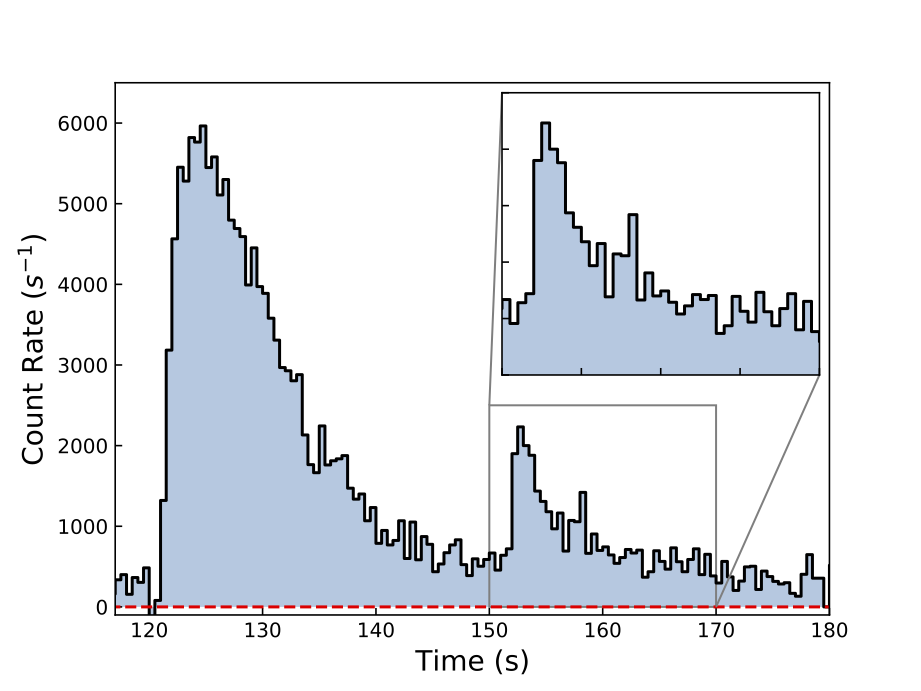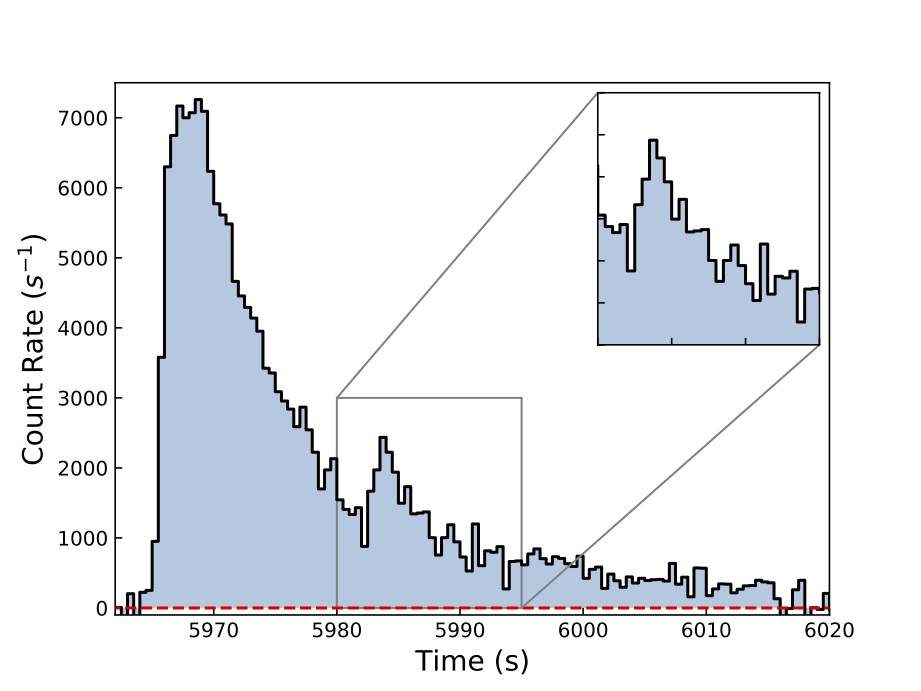NICER / ISS Science Nugget
for January 28, 2021
NICER observes thermonuclear bursts with secondary peaks from the low-mass X-ray binary 4U 1608-52
Some low mass X-ray binaries containing a neutron star show sudden flashes in X-rays lasting a few tens of seconds. It is thought that these events originate from unstable thermonuclear fusion of hydrogen and/or helium on the surface of the neutron star. This explosive reaction quickly covers the whole surface, burning matter recently accreted from the companion star. Current understanding of this process suggests that, during these X-ray bursts, all of the accreted matter on the surface burns. Before another burst can ignite, the surface must be covered again with accreted matter, which is expected to take tens of minutes.
From June to September 2020, NICER monitored prolonged accretion activity in the transient neutron star binary known as 4U 1608-52. In a peer-reviewed paper accepted this week for publication, Dr. Tolga Guver (Istanbul University) and collaborators report the detection of two thermonuclear bursts from 4U 1608-52 that exhibit secondary brightness peaks 30 and 18 seconds after the initial peaks (see figure). The secondary peaks have a fast rise/exponential decay shape that resembles a traditional, single-peaked thermonuclear X-ray burst.
It is not clear whether these secondary peaks are independent bursts or the result of stalled propagation of the burning front, from the original ignition event, as it passes over the neutron star's equator. The observed separation of the peaks is too short to be explained by current theories of so-called "short recurrence time" bursts, while they are too long for these events to be interpreted as due to propagation of the burning front somehow stalling briefly at a point on the star's surface. NICER's observations challenge our understanding of fuel accumulation and flame spreading in these extraordinary thermonuclear-burning environments.


Figure: NICER X-ray (0.3-12 keV photon energy) intensity "lightcurves" of two thermonuclear bursts with secondary peaks observed from 4U 1608-52. The secondary peaks are shown in the insets.
<< Previous
Main Index
Next >>